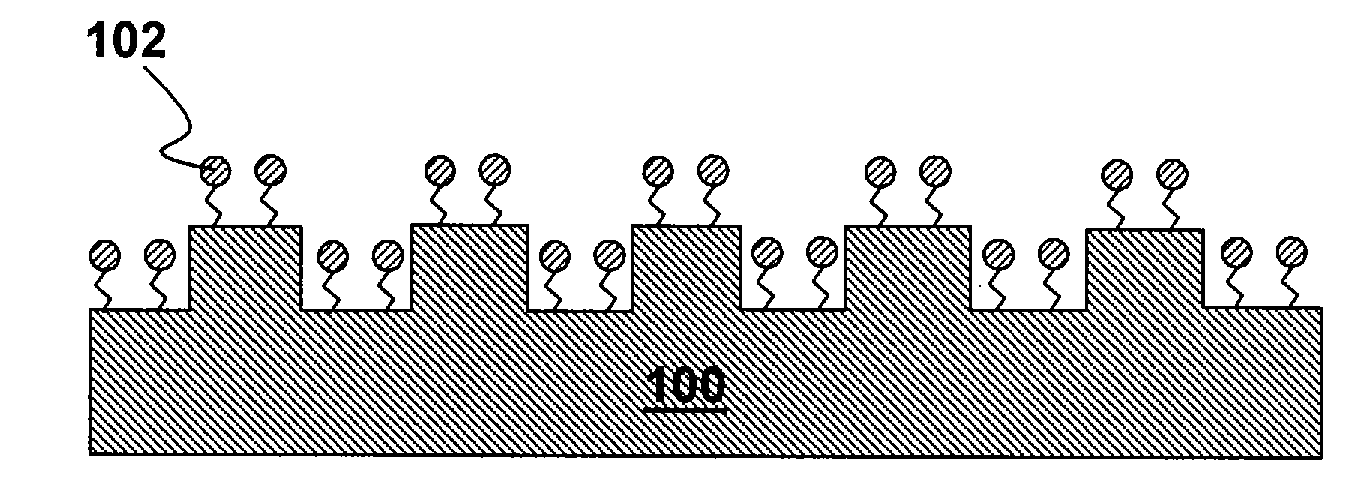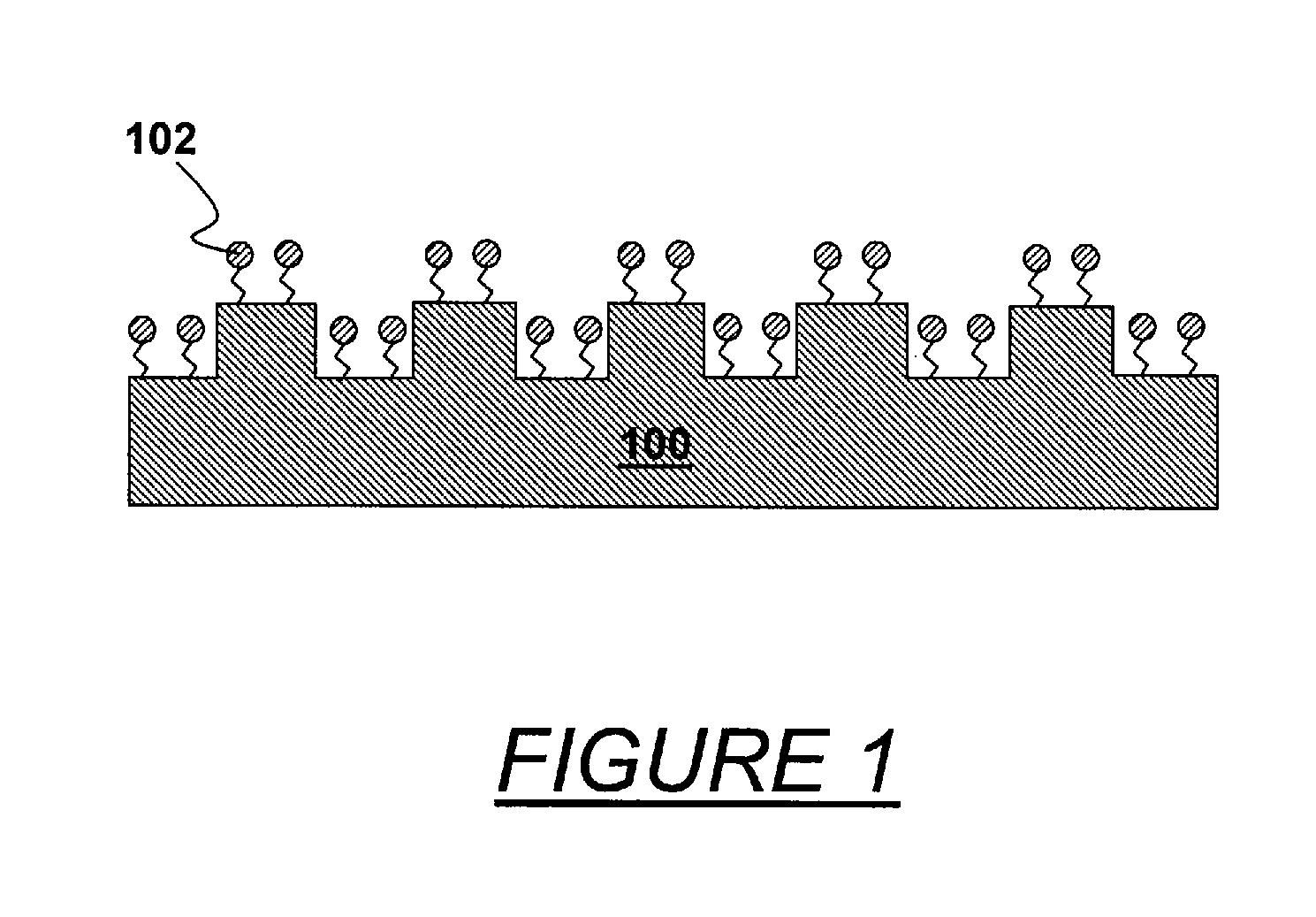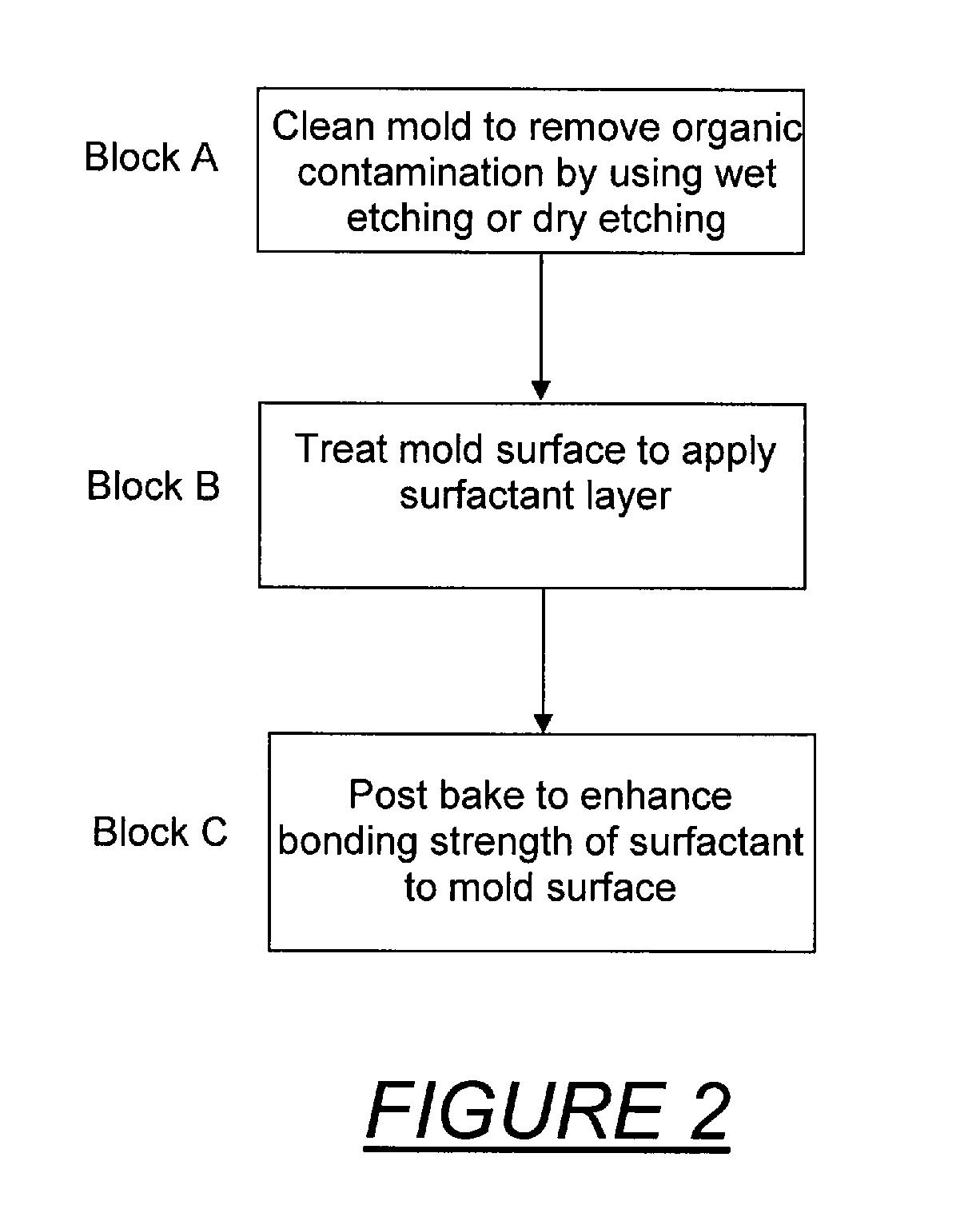Method and apparatus to apply surface release coating for imprint mold
a surface release coating and imprint technology, applied in the direction of photomechanical equipment, instruments, manufacturing tools, etc., can solve the problems of limited resolution of photolithography patterns, throughput of production, and the mold lifetime directly affecting the cost of products
- Summary
- Abstract
- Description
- Claims
- Application Information
AI Technical Summary
Benefits of technology
Problems solved by technology
Method used
Image
Examples
Embodiment Construction
[0018]Referring to FIG. 1, an imprint mold 100 has its molding surface covered with molecules 102 of an anti-sticking surfactant. Chemical bonds are formed between the molecules and the mold. The coverage of the molecules forms a surface release layer to provide a clean separation of the mold from the imprinted resist after imprinting. The surface release layer may be applied on the mold by any of several ways such as liquid phase immersion, vapor phase deposition, chemical vapor deposition, sputtering, and evaporation. The most widely used ways are liquid phase immersion and vapor phase deposition. Liquid phase immersion requires immersion of the mold in a liquid containing the surfactant. The molecules of the surfactant travel in the liquid and bond to the surface of the immersed mold. In vapor phase deposition, molecules of the surfactant arrive in vapor and bond to the surface of the mold when the vapor contacts with the surface. Compared to liquid phase immersion, vapor phase d...
PUM
| Property | Measurement | Unit |
|---|---|---|
| Partial pressure | aaaaa | aaaaa |
| Pressure | aaaaa | aaaaa |
| Concentration | aaaaa | aaaaa |
Abstract
Description
Claims
Application Information
 Login to View More
Login to View More - R&D
- Intellectual Property
- Life Sciences
- Materials
- Tech Scout
- Unparalleled Data Quality
- Higher Quality Content
- 60% Fewer Hallucinations
Browse by: Latest US Patents, China's latest patents, Technical Efficacy Thesaurus, Application Domain, Technology Topic, Popular Technical Reports.
© 2025 PatSnap. All rights reserved.Legal|Privacy policy|Modern Slavery Act Transparency Statement|Sitemap|About US| Contact US: help@patsnap.com



